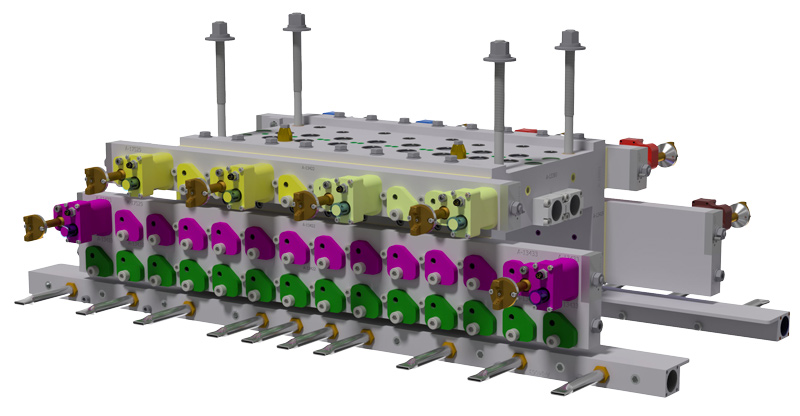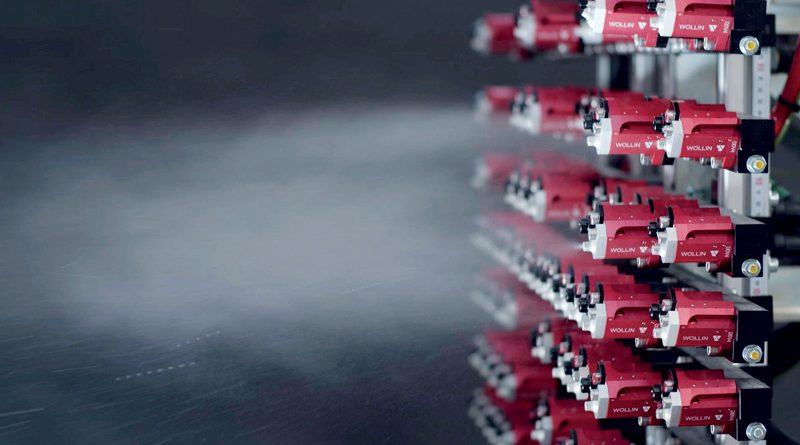Micro Spray Technologies for an Efficient Die Spraying in HPDC
The innovative ECO+ and DeltaSpeed technologies developed by Wollin and AED and distributed in Italy by Gefond ensure optimum lubrication of the die casting mould using minimal quantities of release agent
The potential savings in a HPDC process are becoming smaller and smaller. The sectors where it is still possible to get significative improvements are die thermoregulation and die spraying (that are strictly related and interlocked one to each other). Nowadays any foundries are in position to realize an effective spraying, but is this spraying efficient as well? Effectiveness shows the ability to reach the set goal, while efficiency shows the ability to reach the set goal using as less resources as possible. Concerning die spraying, new release agents are now available on the market (oils or concentrates), that are changing the spraying philosophy: whereas in the past die spraying was used for cooling the die surface, today die spraying is used only for creating the separating film between the die and the casting. As a consequence, the die thermoregulation must be optimized as much as possible: the heat removed by water based spraying, has now to be removed by the thermoregulation. Apart from this, the discriminating factor is the technology used for applying these products: in order to get the maximum results, release agents must be micro dosed. Precision and repeatability of the micro spraying are crucial, and can be reached only using suitable technologies. ECO+ Spray technology from WOLLIN and DeltaSpeed technology from AED can get to the target in different ways that adapt to different foundry necessities (long term productions or frequent die changes): the experience developed in the last years allows to face successfully a wide range of projects. The amount of sprayed release agent per nozzle can be reduced up to 0,01 ml. Additionally, once the desired quantity has been fixed, it will remain stable and constant and independent from external factors such as the release agent pressure or the air pressure.

Multiple goals are at hand:
● shorter cycle time (in some applications, it is theoretically possible to achieve a spraying time of 1 sec)
● reduction of release agent (moving from some tens to some units of concentrate release agent)
● reduction of water consumption (only necessary if the thermoregulation cannot be effective in some areas of the die)
● reduction of the air consumption (thanks to the shorter spraying time and no need to dry the die)
● cancellation or reduction of the water disposal costs (no water or less water is used during spraying)
● longer life time and higher availability of the die (thanks to the reduction of the thermal shocks, see Figure 1)
● better quality of the castings and reduction of the scraps (due to more homogeneous temperature of the die and reduction of the porosities caused by water, see Figure 2)
As a global result, sum of all the above achievements, these technologies lead to a reduced environmental impact, following the European Green Deal.

